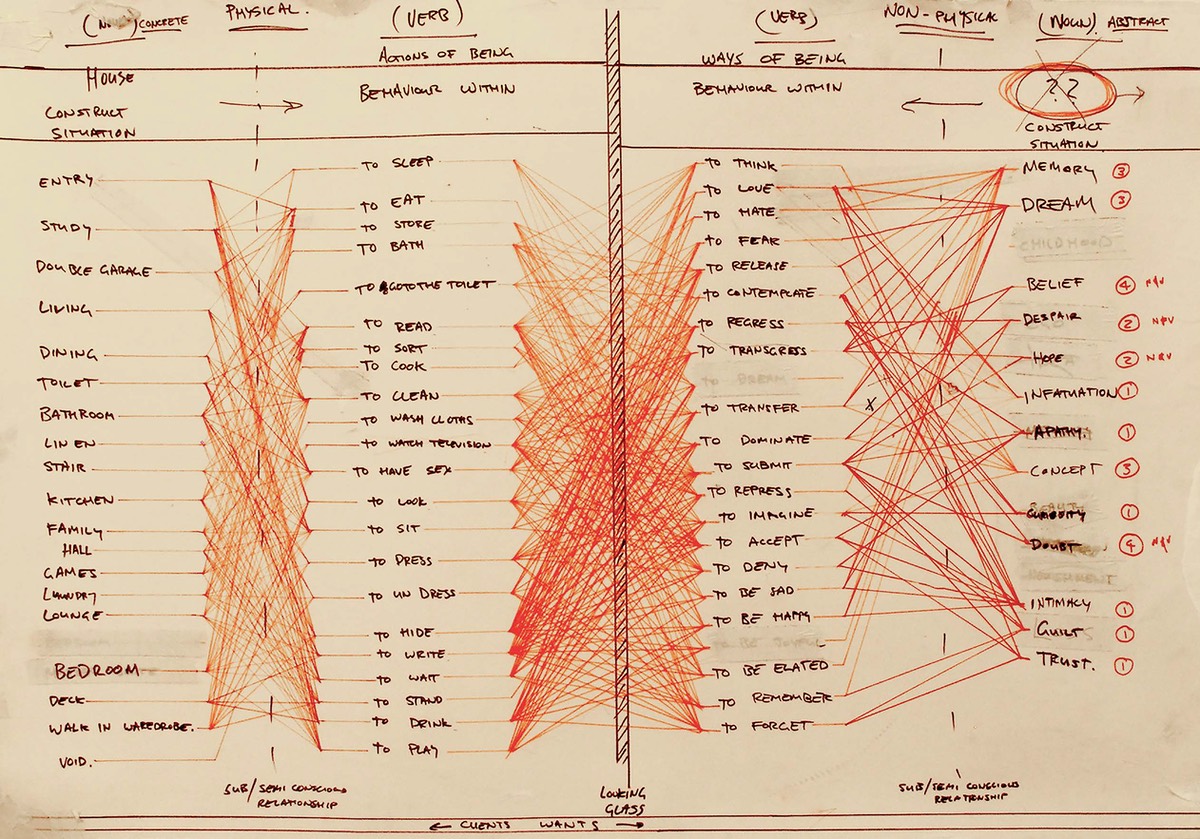the Role of Architectural Drawing in the Production of Meaning in Social Space
Downloads
DOI:
10.31182/cubic.2018.1.005Keywords:
Architectural Drawing, Heterotopia, Social Space, Piranesi, LerupAbstract
This pictorial essay reflects on a unique category of architectural drawing that depicts spaces that cannot physically exist. It suggests that this specific mode of drawing plays a significant role in the production of meaning in social space through depicting ephemeral characteristics of our social relations. This argument is discussed in relation to Michel Foucault’s theoretical allegory of the heterotopic mirror, and illustrated through accompanying images of the drawing project The Virtual Relations (2009). This project used the methodology of “drawing the impossible” with Henri Lefebvre’s theory for the production of space to explore ephemeral conditions of social interaction in the domestic interior as five spatial descriptions.
How to Cite
Published
Issue
Section
License
Copyright (c) 2018 Luke Tipene

This work is licensed under a Creative Commons Attribution 4.0 International License.
References
BAMPFA. “Lars Lerup MATRIX/BERKLEY 76.” Exhibition Catalogue, 1984. Online.
Biln, John. “Perverse Coupling." Assemblage 26 (1995): 38-69. DOI: https://doi.org/10.2307/3171416
Foucault, Michel. “Of Other Spaces.” Translated by Jay Miskowiec. In Diacritics 16 (1986): 22-27. DOI: https://doi.org/10.2307/464648
Gibson, James. “The Ecological Approach to the Visual Perception of Pictures.” Leonardo 11 (1978): 227-235. DOI: https://doi.org/10.2307/1574154
Lerup, Lars. Building the Unfinished: Architecture and Human Action. California: SAGE Publications, 1977.
Lerup, Lars. Planned Assaults: The Nofamily House, Love/House, Texas Zero. Montréal: Centre Canadian d'Architecture/ Canadian Centre for Architecture. Cambridge: Distributed by MIT Press, 1987.
Lefebvre, Henri. The Production of Space. Translated by Donald Nicholson-Smith. Oxford: Blackwell, 1991.
Olivier, Bert. “‘Sustainable’ architecture and the ‘law’ of the fourfold.” South African Journal of Art History 26 (2011): 74-84.
Roncato, Sergio. “Piranesi and the Infinite Prisons.” Spatial Vision 21 (2007): 3-18. DOI: https://doi.org/10.1163/156856808782713799
Tafuri, Manfredo. The Sphere and the Labyrinth: Avant-Gardes and Architecture from Piranesi to the 1970s. Translated by Pellegrino d’Acierno and Robert Connolly. Cambridge: MIT Press, 1987.

